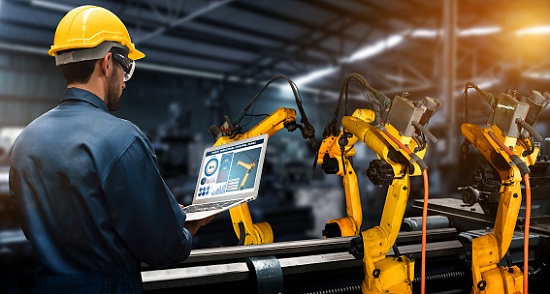AI Autonomous Cars Might Showcase The Wisdom Of The Einstein Clock Paradox
By Lance Eliot, the AI Trends Insider Are you familiar with the famous twin’s paradox that was proffered by Einstein? It’s quite a hoot. The topic focuses on the foundational nature of time and clocks. Einstein brought up the topic while conceiving the theories of relativity, though historians point out that the thought experiment can be traced to a 1911 paper […]


By Lance Eliot, the AI Trends Insider
Are you familiar with the famous twin’s paradox that was proffered by Einstein?
It’s quite a hoot.
The topic focuses on the foundational nature of time and clocks. Einstein brought up the topic while conceiving the theories of relativity, though historians point out that the thought experiment can be traced to a 1911 paper from scientist Paul Langevin. In any case, let’s jump into the details and put aside the historical origins.
Imagine that you are standing here on earth, which I assume most of you are, and you happen to have been born with an identical twin. Your beloved twin has decided to become an astronaut and venture into the far reaches of outer space. You are both the age of 25, let’s say.
You wave goodbye as your twin rockets away. Pretend that the spaceship is incredibly fast, so fast that it moves at nearly the speed of light. Marking the days on your calendar here on earth, your twin flies for 25 years to a far point in the universe, turns around, and for another 25 years flies back to earth.
Upon arriving here on earth, you greet your long traveling twin, embracing with a firm hug.
I’ll ask you a seemingly simple and innocent question: What is your age and what is the age of your twin upon meeting each other at the end of your twin’s voyage?
Well, we know that you marked the days and believe that the trip took 50 years. The trip started when you both were 25 years old. Therefore, the rote math suggests that you are now both 75 years old. Suppose I told you that your twin is now actually only 30 years old, having aged a mere 5 years while you have aged fifty years.
Is that shocking to you or does it comport with what you would have expected?
If you’ve ever watched any science fiction movies about space travel, you’ve undoubtedly seen story after story that involves a space traveler experiencing time more slowly than those of us on earth. When they get back to earth, their children are older than they are, and the peers that they left on earth are now long deceased.
But not everyone would agree with that premise.
You believe that your twin aged more slowly because they traveled at a fast speed and therefore approached our fundamental unit of time per the speed of light.
The paradox aspect is that we could turn the situation around and say that instead of looking at the twin that flew away from you, suppose we look at things in the eyes of your twin, and they would perceive that you essentially flew away from them. You might say that the twin was “stationary” and you here on earth were moving away from the twin.
In that case, maybe you ought to have aged only five years and your twin should have aged fifty years.
That is the crux of the paradox. Which is it? Did you age the fifty years or did your twin age the fifty years?
Of course, you might toss your hands in the air and say that you are both still the same age, regardless of how many years passed, since you could try to argue that both of you aged the same number of years while the traveling occurred (those that undertake such hand tossing are considered “deniers”).
Most of today’s physicists would agree that the “correct” answer is that you aged fifty years and your twin aged the five years.
For such physicists, there isn’t any paradox and the answer easily is derived via Einstein’s theory of special relativity and the handy Lorentz factor (a vital equation for figuring out elapsed time based on your velocity and number of years traveled).
Here’s what Einstein said: “If we placed a living organism in a box… one could arrange that the organism, after any arbitrary lengthy flight, could be returned to its original spot in a scarcely altered condition, while corresponding organisms which had remained in their original positions had already long since given way to new generations.”
Note that you don’t need to use twins in this thought experiment and could substitute the twins by simply saying that you have two clocks that are set to the same time, of which you then send one of the clocks on the journey, and upon returning the traveling clock to earth you compare the time of the two clocks.
In fact, the entire twin story can be reduced to the belief that moving clocks go slower (a matter of time dilation, as it were).
You are welcome to mull over the paradox and study it with whatever intensity and gusto you prefer. For our purposes, the infamous problem brings up the overall notion that time can be perceived differently and on a relative basis for an observer or participant.
Here’s an intriguing question: Could the advent of true self-driving cars cause us to have a different sense of time?
Don’t misinterpret the question to somehow suggest that self-driving cars are going to move at the speed of light. Sorry, that’s not in the cards for now.
Self-driving cars might though subtly alter our sense of time via the convenience and ease of transit via car travel, changing our perception about time.
Let’s unpack the matter.
For my framework about AI autonomous cars, see the link here: https://aitrends.com/ai-insider/framework-ai-self-driving-driverless-cars-big-picture/
Why this is a moonshot effort, see my explanation here: https://aitrends.com/ai-insider/self-driving-car-mother-ai-projects-moonshot/
For more about the levels as a type of Richter scale, see my discussion here: https://aitrends.com/ai-insider/richter-scale-levels-self-driving-cars/
For the argument about bifurcating the levels, see my explanation here: https://aitrends.com/ai-insider/reframing-ai-levels-for-self-driving-cars-bifurcation-of-autonomy/
The Levels Of Self-Driving Cars
It is important to clarify what I mean when referring to true self-driving cars.
True self-driving cars are ones where the AI drives the car entirely on its own and there isn’t any human assistance during the driving task.
These driverless cars are considered a Level 4 and Level 5, while a car that requires a human driver to co-share the driving effort is usually considered at a Level 2 or Level 3. The cars that co-share the driving task are described as being semi-autonomous, and typically contain a variety of automated add-ons that are referred to as ADAS (Advanced Driver-Assistance Systems).
There is not yet a true self-driving car at Level 5, which we don’t yet even know if this will be possible to achieve, and nor how long it will take to get there.
Meanwhile, the Level 4 efforts are gradually trying to get some traction by undergoing very narrow and selective public roadway trials, though there is controversy over whether this testing should be allowed per se (we are all life-or-death guinea pigs in an experiment taking place on our highways and byways, some point out).
Since the semi-autonomous cars require a human driver, such cars aren’t particularly going to alter the dynamics of time perception. There is essentially no difference between using a Level 2 or Level 3 versus a conventional car when it comes to the time paradox aspects.
It is notable to point out that in spite of those dolts that keep posting videos of themselves falling asleep at the wheel of a Level 2 or Level 3 car, do not be misled into believing that you can take away your attention from the driving task while driving a semi-autonomous car.
You are the responsible party for the driving actions of the car, regardless of how much automation might be tossed into a Level 2 or Level 3.
For why remote piloting or operating of self-driving cars is generally eschewed, see my explanation here: https://aitrends.com/ai-insider/remote-piloting-is-a-self-driving-car-crutch/
To be wary of fake news about self-driving cars, see my tips here: https://aitrends.com/ai-insider/ai-fake-news-about-self-driving-cars/
The ethical implications of AI driving systems are significant, see my indication here: http://aitrends.com/selfdrivingcars/ethically-ambiguous-self-driving-cars/
Be aware of the pitfalls of normalization of deviance when it comes to self-driving cars, here’s my call to arms: https://aitrends.com/ai-insider/normalization-of-deviance-endangers-ai-self-driving-cars/
True Self-Driving Cars And Time Perception
For the use of Level 4 and Level 5 driverless cars, there isn’t a human driver in the car. Occupants inside the self-driving car are all considered passengers.
When you get into a self-driving car, the AI system will whisk you away to whatever destination you’ve stated. No need on your part to watch the road. No need to provide driving advice about which way to go. You can liken this to acting as a passenger in an airplane, whereby you simply sit back, relax, and the traveling occurs without you having to lift a finger.
Suppose you want to visit a good friend that lives twenty miles away from you.
Normally, you’d need to grab your prescription glasses, make sure you have your valid driver’s license on you, and then drive your car to see your friend. During the driving journey, you’d be stressed out about the horrid traffic and the near misses with ornery drivers.
By the time you reached your friend’s place, you’d be exhausted, irritable, and exasperated at the drive. As such, you might vow to your friend that it will be a rare day that you opt to drive to see them again, given the arduous nature of getting there. The trip seemed to take forever.
Switch to a scenario involving the use of a driverless car.
You get into the self-driving car and have no worries about whether you can see the road, and nor do you have a driver’s license on you or even need one at all. During the trip, you watch some streaming videos and enjoy the time spent in the self-driving car. In fact, you might recline the seat and take a nap, dreaming perhaps about time travel and someday visiting planets at the far reaches of our galaxy.
In the former case of driving the car, time seemed to go slowly, agonizingly so. In the latter case of being a passenger in a self-driving car, time seemed to move along quickly.
Even your friend might perceive the time differences of your taking a self-driving car versus having driven yourself.
Upon your arrival at your friend’s place when you drove a car, you are vocal in complaining about the drive, and your friend feels terrible that you had to endure the long drive. When arriving via a self-driving car, you are refreshed and happy, so your friend feels like it was just moments ago that you said you’d be on your way.
In short, your perception of time could change as a result of making use of self-driving cars. Likewise, your friend, not having traveled in the driverless car, might also perceive time differently as a result of your using a driverless car.
Again, this is not to suggest that time changed in some manner as a result of the self-driving car. Instead, the emphasis is on the perception of time by both the participant and the observer.
For more details about ODDs, see my indication at this link here: https://www.aitrends.com/ai-insider/amalgamating-of-operational-design-domains-odds-for-ai-self-driving-cars/
On the topic of off-road self-driving cars, here’s my details elicitation: https://www.aitrends.com/ai-insider/off-roading-as-a-challenging-use-case-for-ai-autonomous-cars/
I’ve urged that there must be a Chief Safety Officer at self-driving car makers, here’s the scoop: https://www.aitrends.com/ai-insider/chief-safety-officers-needed-in-ai-the-case-of-ai-self-driving-cars/
Expect that lawsuits are going to gradually become a significant part of the self-driving car industry, see my explanatory details here: http://aitrends.com/selfdrivingcars/self-driving-car-lawsuits-bonanza-ahead/
Conclusion
If this change in a sense of time can occur, one argument to be made is that presumably via today’s ridesharing services you would already be undergoing that same change in time perception.
A ridesharing service of today allows you to sit back and relax since there is a human driver at the wheel.
The comparison is only half-right.
You still need to be wary about the human that is your ridesharing driver. In theory, the human driver could make wayward moves and crash the car. Being in a ridesharing car is not the same as being absent of all concerns about the driving task.
For self-driving cars, some assert that they will be entirely safe and never crash. I don’t subscribe to that belief. There will still be car crashes, though (hopefully) of a much smaller volume and a lesser force of damage or injury, though we don’t yet know if that will be the case.
Assume for the moment that driverless cars eventually will be extremely safe and safer than human drivers in the aggregate. In that case, the claim is that you’ll be less on-edge when in a driverless car and more prone to being able to enjoy the ride without any substantive qualms.
Another factor is that self-driving cars will gradually be rolled-out and there will be a mixture of both conventional cars and driverless cars on our roadways for many years to come. One could contend that you’ll sometimes be using a human-driven car and other times be using a self-driving car.
The use of conventional cars will continue to remind you of the “time” related aspects and therefore continue to keep the driverless car perception as a fresh one. Eventually, the number of conventional cars will presumably dwindle, and you’ll only rarely use a human-driven car.
In that case, you’ll inevitably get used to being inside a driverless car. Over time, we will all become used to the self-driving car as this time-saver or time enabler. A new normal will inexorably take hold of us.
At that juncture, we will no longer perceive the time of travel as any different since it will all be of the same nature. Our time perception will have adjusted.
That’s admittedly a long time from now, so let’s enjoy our new perception of time as it unfolds, relishing it for as long as time will allow.
Copyright 2021 Dr. Lance Eliot; This content is originally posted on AI Trends.
[Ed. Note: For reader’s interested in Dr. Eliot’s ongoing business analyses about the advent of self-driving cars, see his online Forbes column: https://forbes.com/sites/lanceeliot/]





































